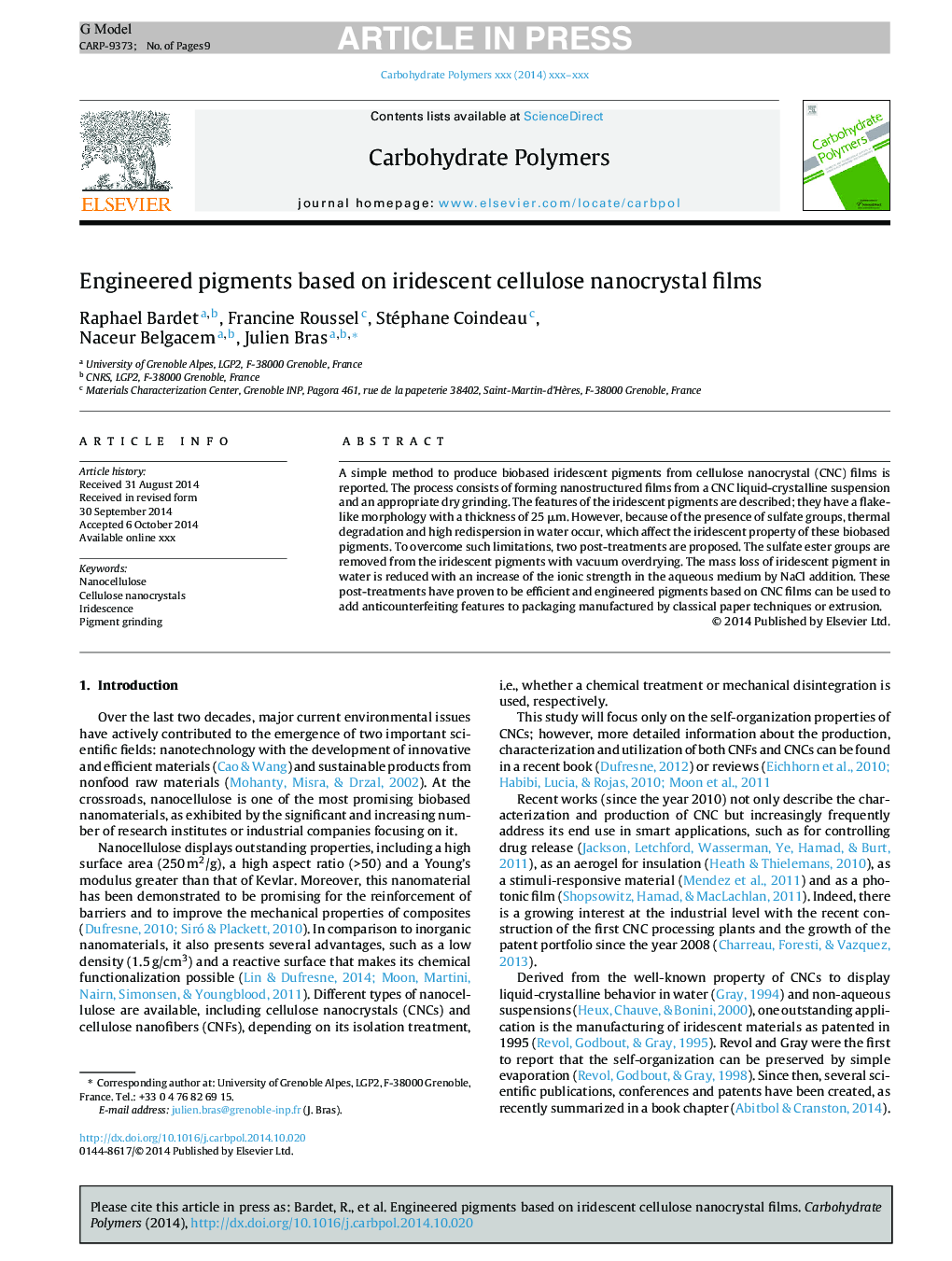| Article ID | Journal | Published Year | Pages | File Type |
|---|---|---|---|---|
| 7789353 | Carbohydrate Polymers | 2015 | 9 Pages |
Abstract
A simple method to produce biobased iridescent pigments from cellulose nanocrystal (CNC) films is reported. The process consists of forming nanostructured films from a CNC liquid-crystalline suspension and an appropriate dry grinding. The features of the iridescent pigments are described; they have a flake-like morphology with a thickness of 25 μm. However, because of the presence of sulfate groups, thermal degradation and high redispersion in water occur, which affect the iridescent property of these biobased pigments. To overcome such limitations, two post-treatments are proposed. The sulfate ester groups are removed from the iridescent pigments with vacuum overdrying. The mass loss of iridescent pigment in water is reduced with an increase of the ionic strength in the aqueous medium by NaCl addition. These post-treatments have proven to be efficient and engineered pigments based on CNC films can be used to add anticounterfeiting features to packaging manufactured by classical paper techniques or extrusion.
Related Topics
Physical Sciences and Engineering
Chemistry
Organic Chemistry
Authors
Raphael Bardet, Francine Roussel, Stéphane Coindeau, Naceur Belgacem, Julien Bras,
